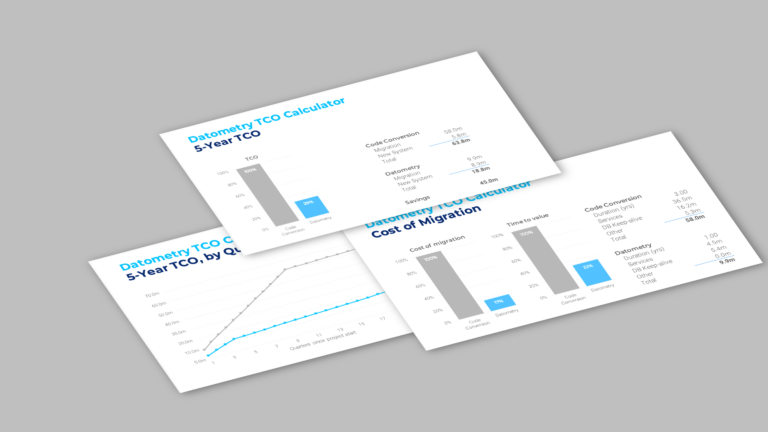There is a rapidly growing movement of companies moving away from Teradata. They’re tired of being told how IT only runs the business but doesn’t help grow it, and they cannot afford to miss out on an opportunity to generate new revenue by leveraging the vast array of data processing facilities in the public cloud.
Yet, replatforming instills fear in even the most hardened IT leader. For a perspective, consider this quote a major enterprise recently received for a rewrite-based migration: $26m for a project that was supposed to take 36 months. Take into account how practically every migration runs late and goes way over budget. Now, you’re looking easily at $40m to $50m, probably over 5 years.
IT leaders who assume they can rewrite their way out of Teradata in a couple of months will face a rude awakening, along with a potentially career-ending misstep. What are some other common mistakes companies need to avoid when replatforming from Teradata?
Most BI/ETL vendors support cloud data warehouses (CDWs) in the latest versions of their software (emphasis is on the latest version). Companies that have a well-established application ecosystem are most likely running older versions of these systems – so they cannot just repoint them.
Assuming that existing 3rd party applications can simply be repointed
To make them work with new destination data warehouses, companies must first upgrade. This effort depends on the size and structure of the existing system, but upgrading is an operation that typically spans multiple quarters and quickly costs millions of dollars.
However, even an expensive upgrade doesn’t do the job just yet. All commercial BI/ETL tools support the injecting of customized SQL into reports and data pipelines. As a result, there is Teradata SQL embedded practically in all daily processes. In a conventional rewrite, all that logic needs to be extracted, rewritten, re-inserted, re-tested, and re-deployed.
While it is tempting to believe the ecosystem is portable, in practice it requires significant effort which is highly labor-intensive. Continue Reading on Site
About Mike Waas, CEO Datometry
Mike Waas founded Datometry with the vision of redefining enterprise data management. In the past, Mike held key engineering positions at Microsoft, Amazon, Greenplum, EMC, and Pivotal. He earned an M.S. in Computer Science from the University of Passau, Germany, and a Ph.D. in Computer Science from the University of Amsterdam, The Netherlands. Mike has co-authored over 35 peer-reviewed publications and has 20+ patents on data management to his name.




